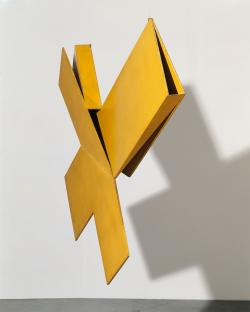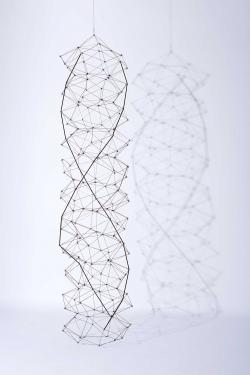The characteristics that made Mira Schendel so unique were present since the very outset of her career: her preference for asymmetry in the composition, her emphasis on the material appearance of the works, and the centrality that the notion of the artwork’s making, understood as the link between the artist’s experience and the world, was to have for her.
Born in Zürich and later a permanent resident of Brazil, Mira Schendel (1919–1988) is outstanding for the unique way she trod the paths opened by modern art after the middle of the 20th century. It must be noted that she developed her artistic activity only during her life in Brazil, from 1949 onward. Of Italian and German ancestry, Myrrha Dagmar Dub was raised as a Catholic, despite maintaining contact with the Jewish family of her father on periodic trips to Germany during her childhood. She grew up in Milan, where she had her first lessons in drawing. Perhaps these biographical data would not be important if Mira Schendel had been born into another era. But in her case, as happened with so many other Europeans, the rise of fascism introduced a rupture into her life, causing her to move to a country with which she had no previous contact. Together, the natural isolation of this situation and the specific moment of the postwar period in South America were decisive for her definition as an artist.
She began her production in the late 1940s with paintings and drawings that present a figuration (landscapes, still lifes, scenes of house interiors and façades) in dark and melancholic tones, structured by an intuitive geometry. In Brazil, the early 1950s were marked by a public discussion about the meaning and function of art in modern industrialized society, with enthusiastic participants on all sides: those who defended figurative art of a national and revolutionary bent, the defenders of the postwar “abstractionism” as a form of updating the art world, and the concrete and neo-concrete artists—who were the most radical in their ideas concerning the new role of art and society. Mira Schendel never joined any side, and this environment, which certainly played a role in her development, is always evident only tangentially in her work. The characteristics that made her so unique were present since the very outset of her career: her preference for asymmetry in the composition, her emphasis on the material appearance of the works, and the centrality that the notion of the artwork’s making, understood as the link between the artist’s experience and the world, was to have for her.
It is essential to observe that Mira Schendel had a particular interest in occidental and oriental philosophy and in questions related to theology and the history of religions. In this sense, her theoretic references are sometimes closer to these fields of knowledge than to the history and theory of art. And for this reason, even in her figurative paintings from the 1950s, there is a perceptible aim to treat space and time as processes in formation, phenomena experienced by the subject as an unfolding of an expanding temporality. The vigorous materiality of her works, which also arises through precise, economical actions, is likewise an indication sign of this space-time in dilation.

It was during the 1960s that Mira Schendel produced her most significant works. She gradually gave up painting and began to work with special paper materials, using them in unconventional ways. In drawings such as Untitled (1965), which belongs to her Bombas (Bombs) series, she unfolds the elements previously observed in her paintings with a remarkable ability for synthesis that would extend to other artworks from the same period. At that particular time, geometric shapes are combined with free and rapid gesturality. The material gains a powerful presence, and the movement between chance and intention, construction and reconstruction, comes into the foreground. Here, it is also possible to glimpse a form that is suggestive of the temporal transitoriness of her previous still lifes.
But it is in the set of drawings from the Monotipias (Monotypes) series that the subtlety and precision of Mira Schendel’s traces would reach its highest power. Various fundamental characteristics of her poetics are condensed in the simplicity of these drawings made with oil paint on rice paper, produced in 1964 and 1965. The asymmetry of her canvases reappears in small ephemeral architectures, transitive shapes that suggest an instant, even if unrepeatable, of a gesture that is unfolded in time. Made to be viewed in a series, whose parts were only rarely determined by the artist, the Monotipias simultaneously refer to the open and unfinished temporality and to the idea of time experienced as the condensation of ephemeral moments, which, upon being captured, become eternal.
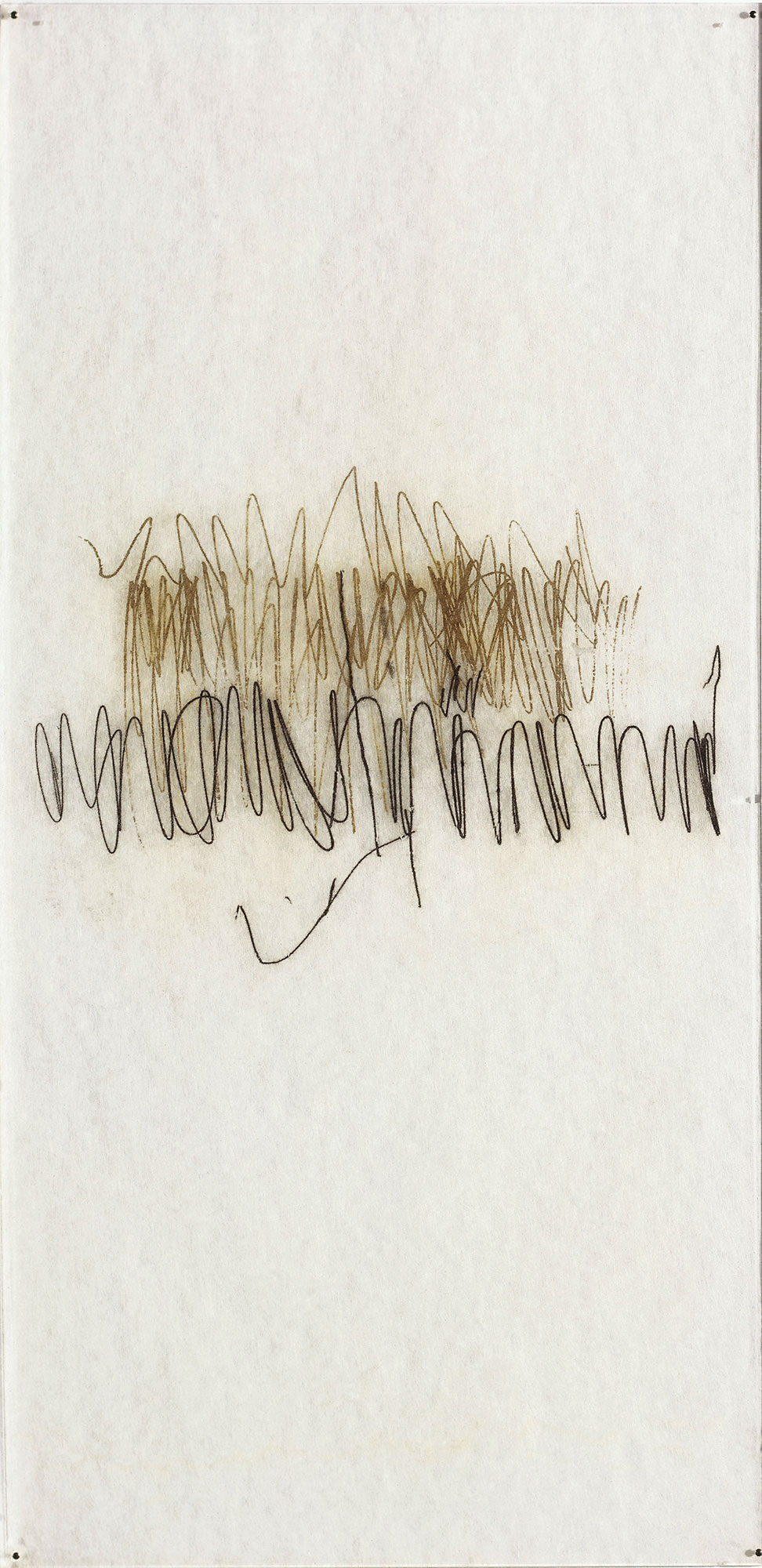
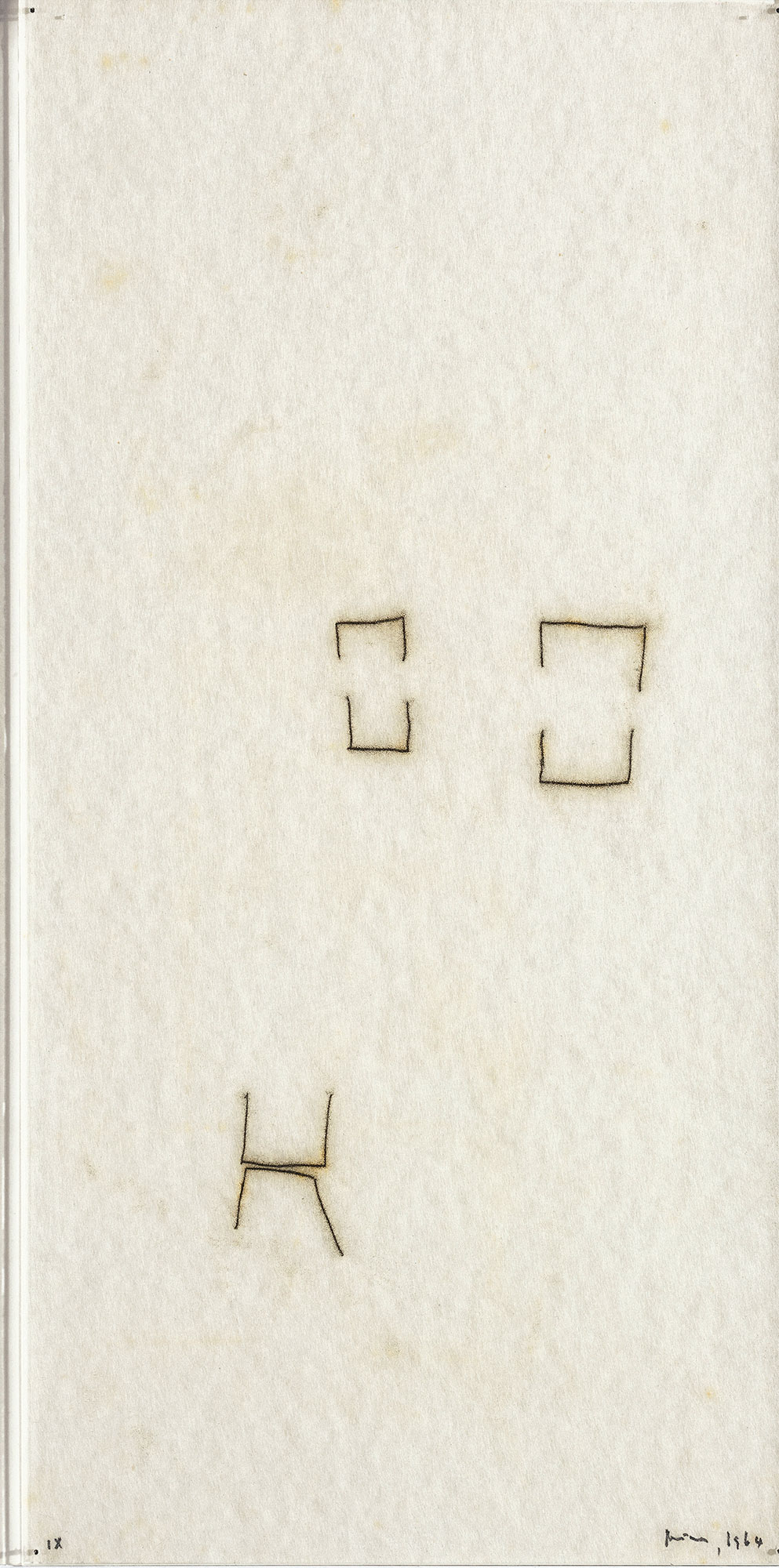
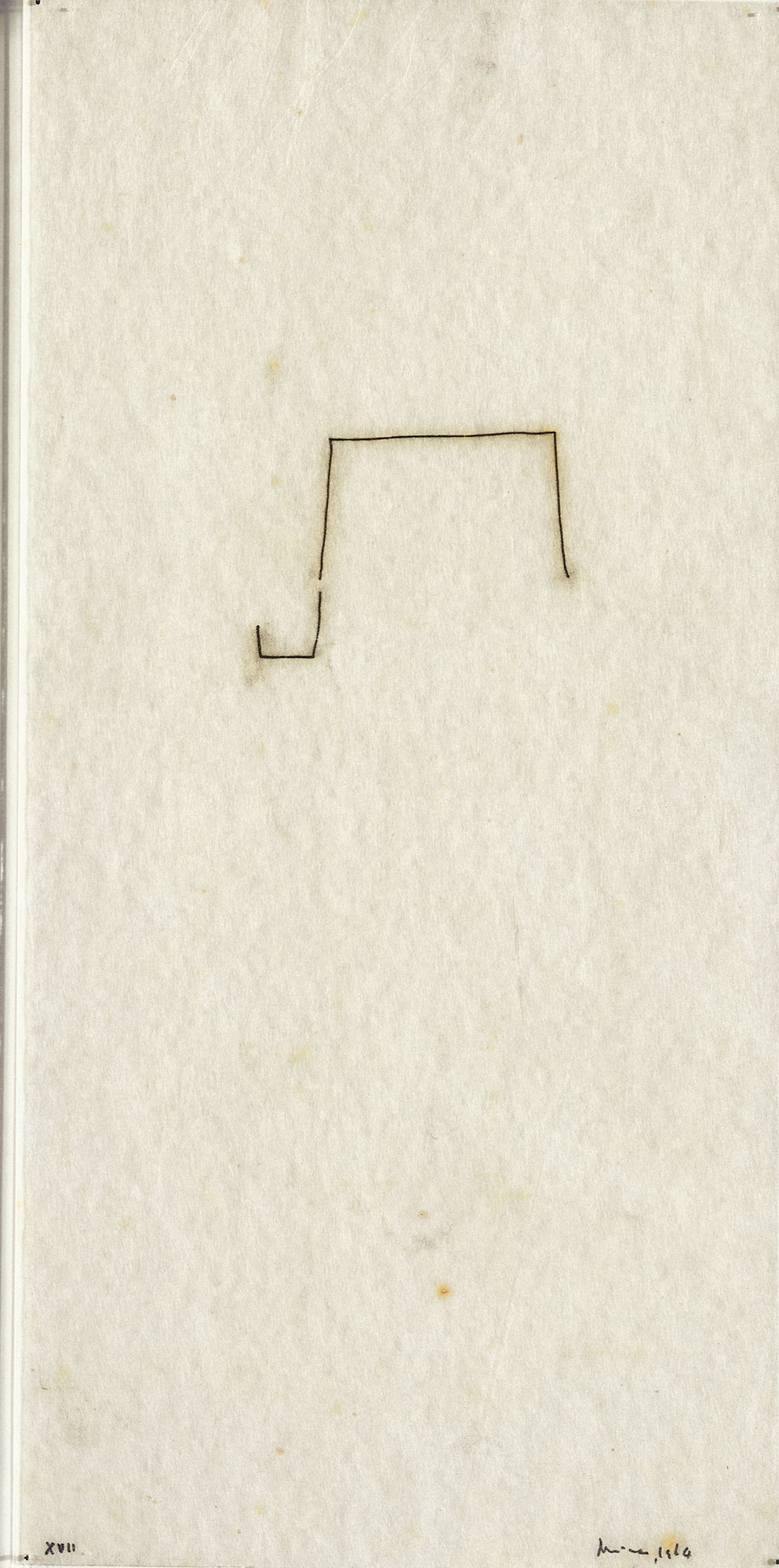
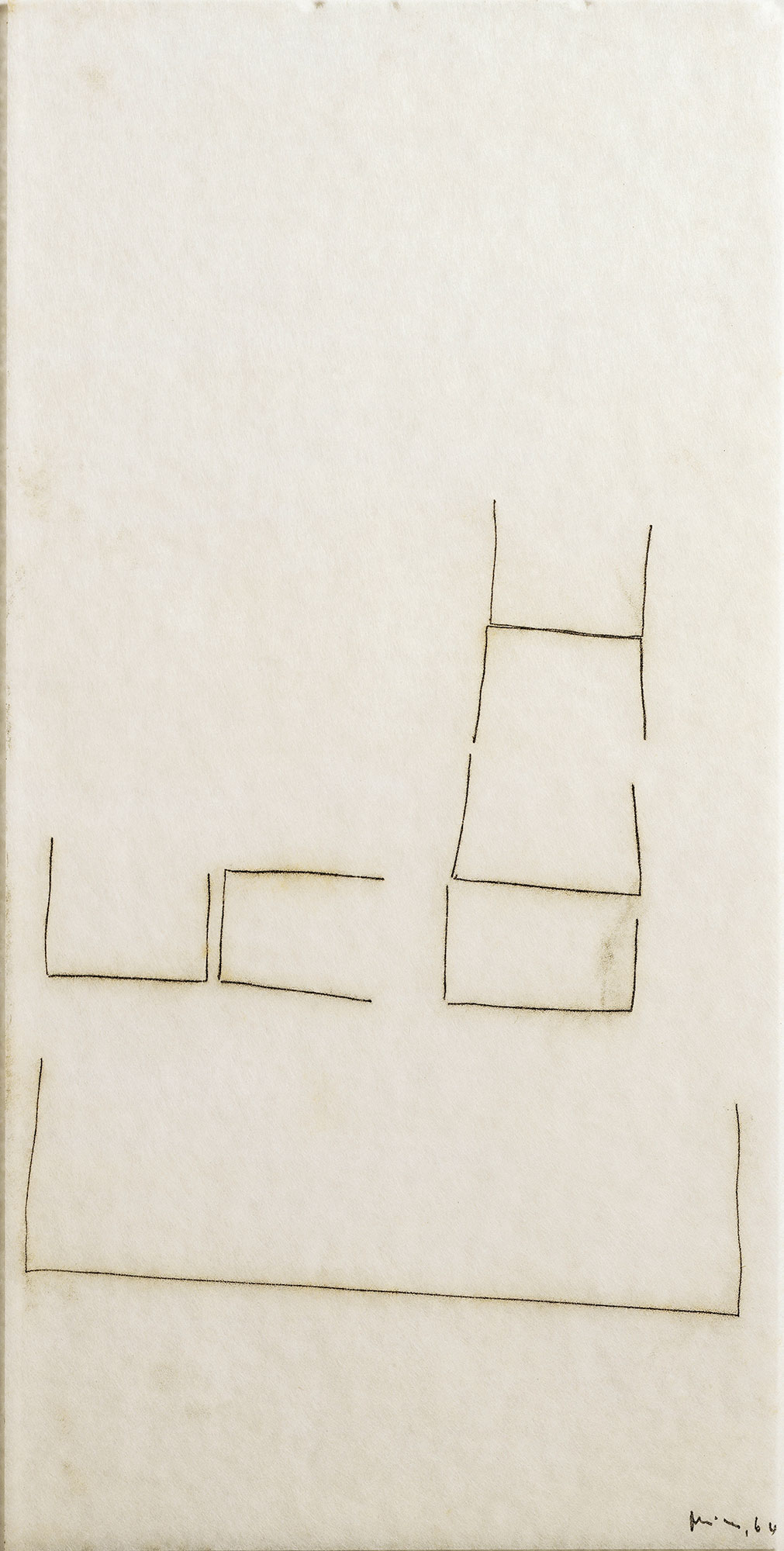
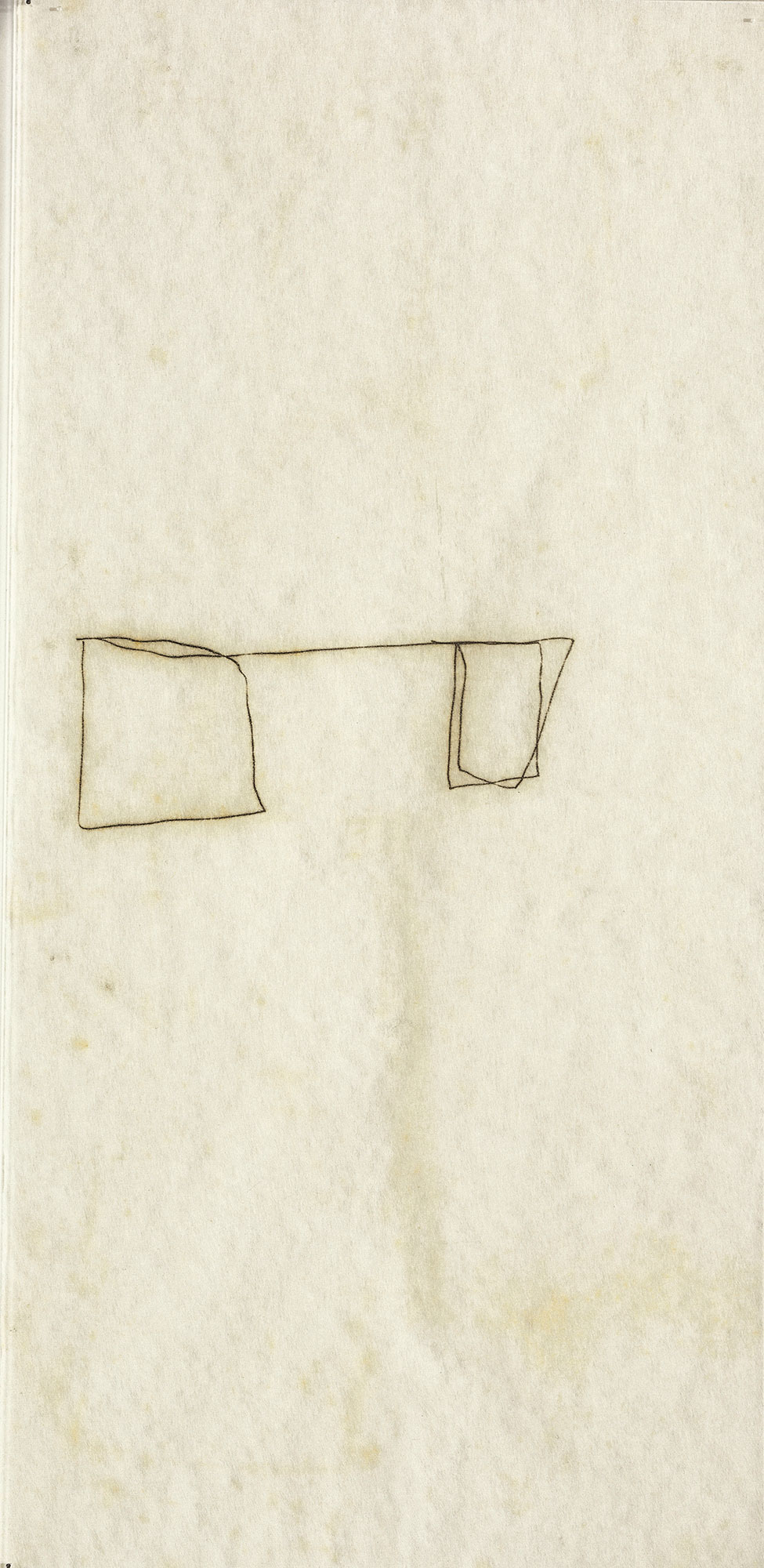
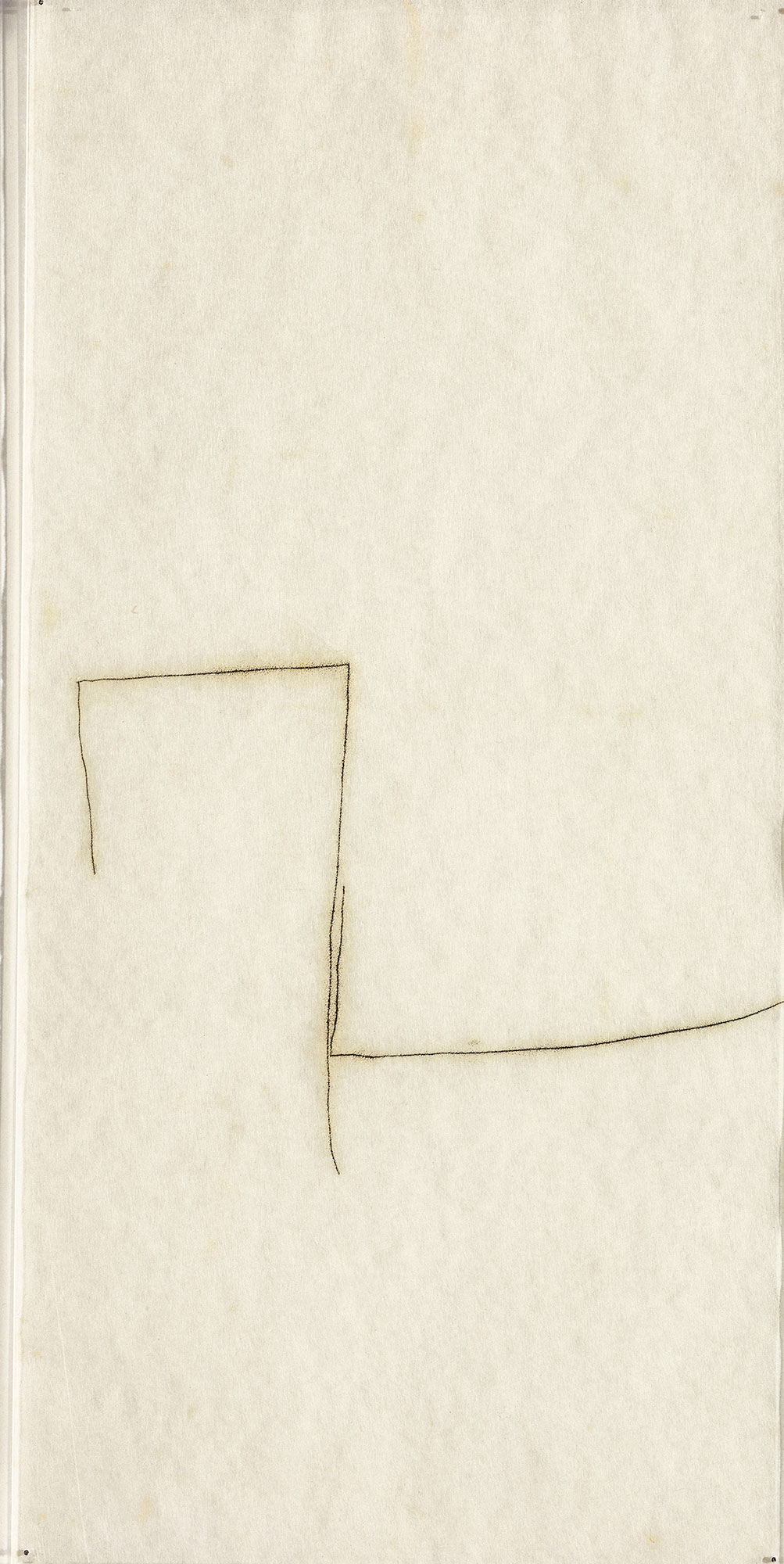
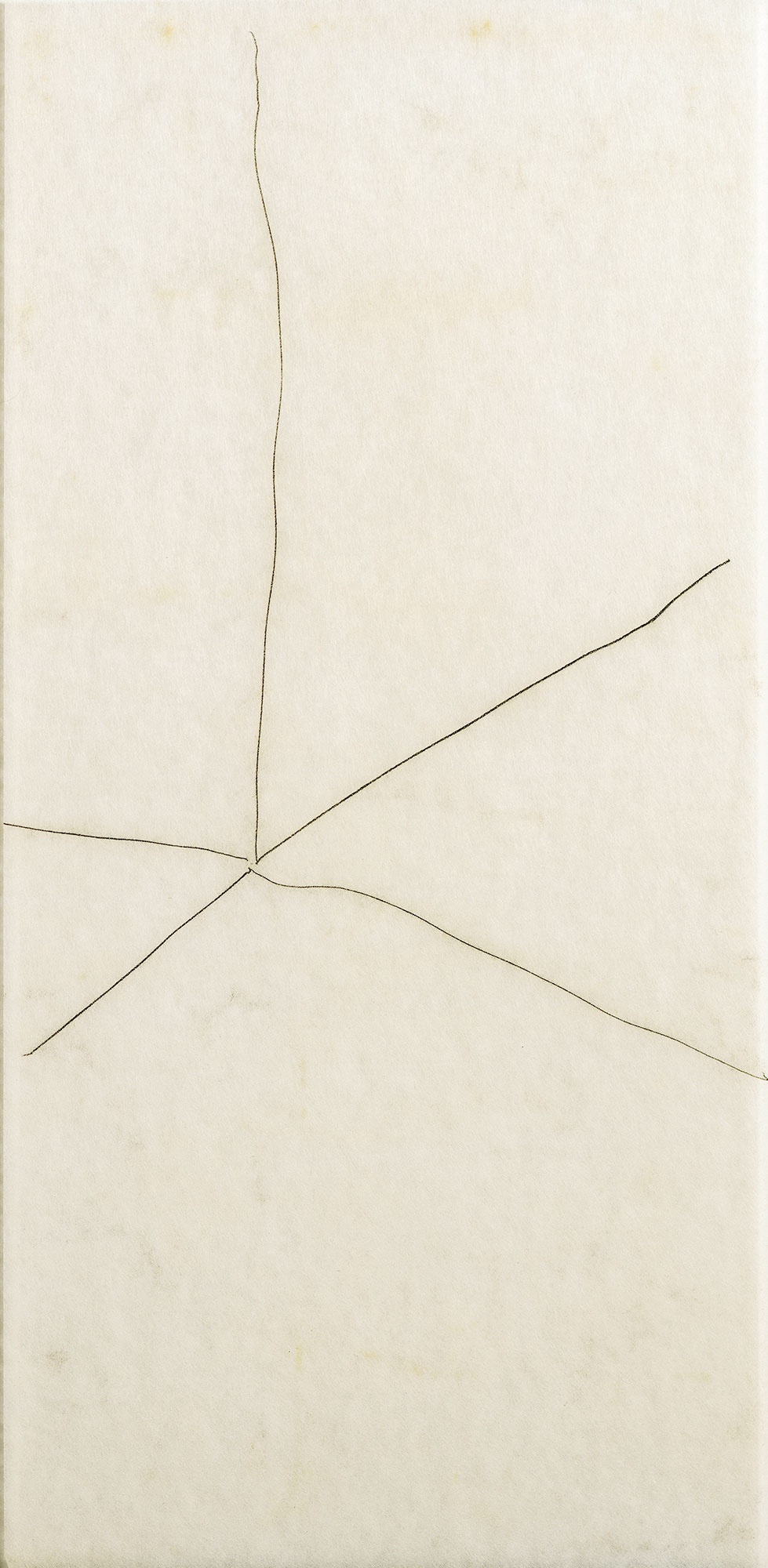
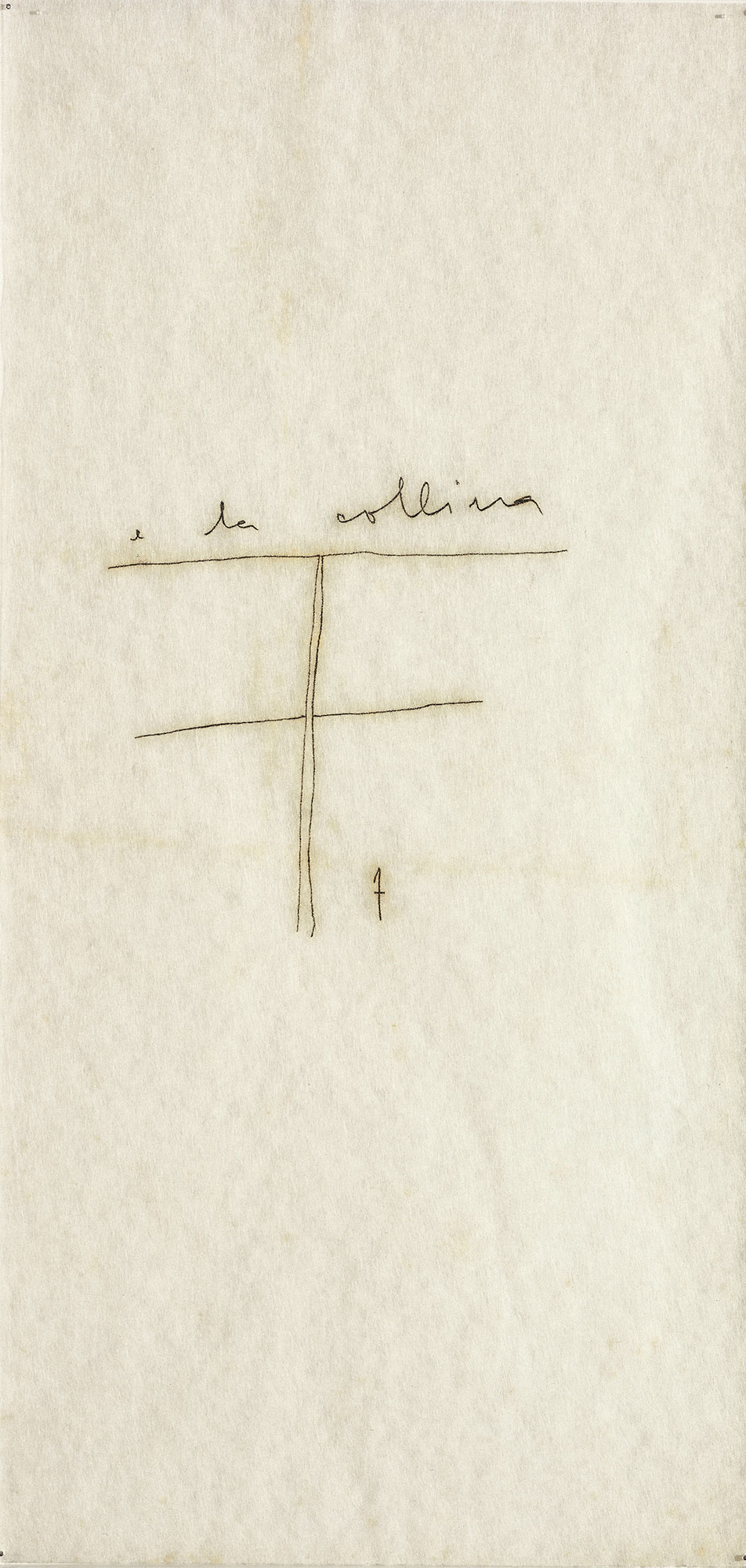
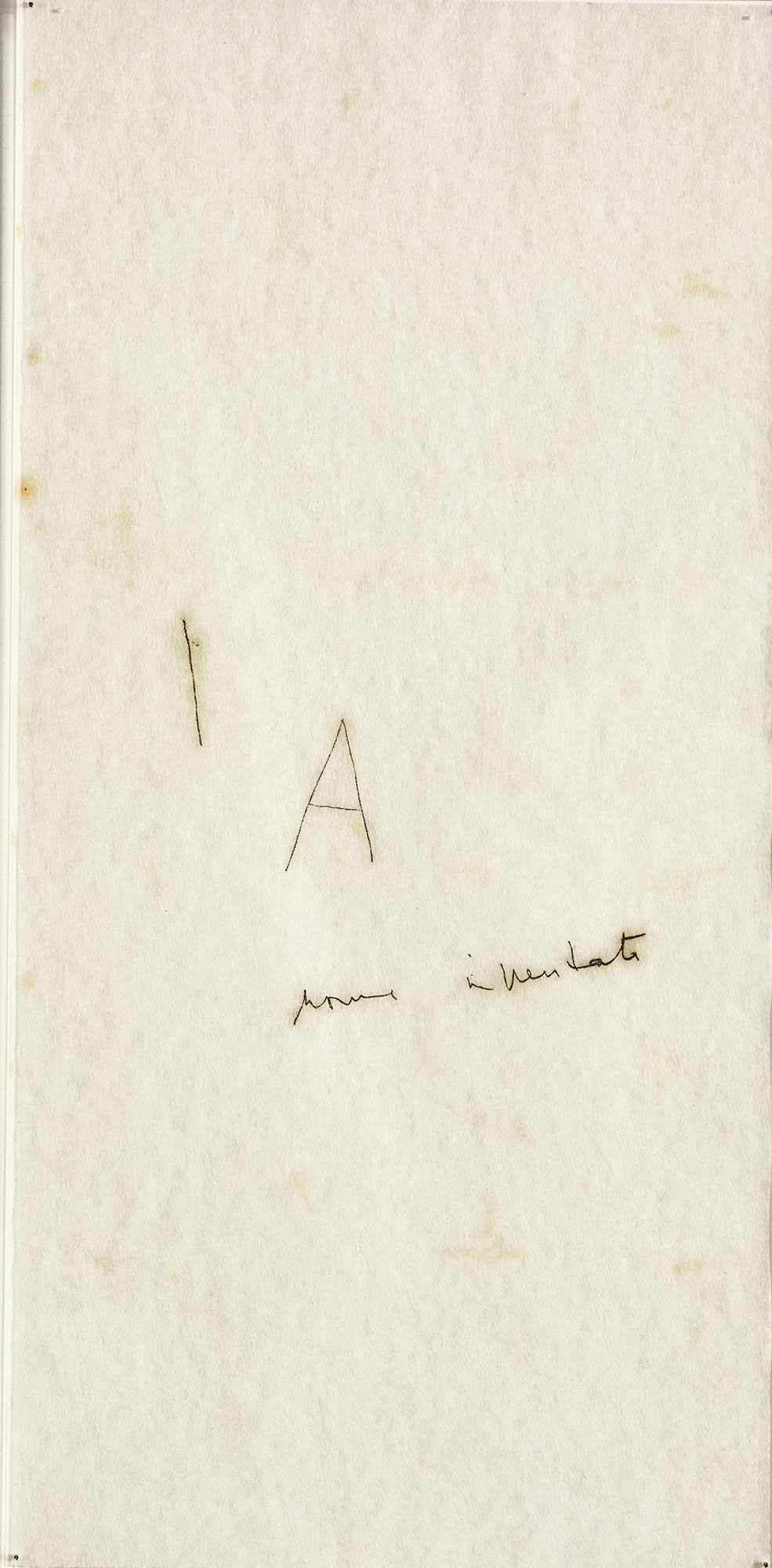
In regard to spatiality, the artist developed a particular way of presenting the Monotipias, namely between two acrylic sheets floating in the exhibition space. The notion of “front and back” was thus dismissed, and the drawings began to be perceived as bodies that occupy the same space as the viewer, in a subject-to-subject relationship, rather than merely as simple objects of contemplation. Without resorting to the idea of participation, very much in vogue at that time, Schendel also wanted to deal with an enlarged concept of corporeality and aesthetic perception. When these drawings are shown, they are reactivated by the space and by the physical presence of the viewer.
Although the philosophical questions posed in her works for a long time caused them to be considered hermetic, there is also a concept of reflection embedded in the process of their making that is inseparable from them. For this reason, her works, despite raising questions of a metaphysical order, were never illustrations of a conceptual problem. They rather emphasize the posing of the problem itself in visual terms. One instance of this is the issue of the material’s opacity/transparence (and, consequently, that of the world), which is present in nearly all of her productions and which in the Objetos gráficos (Graphic objects) is raised again by reflecting on the opacity of language. These works, developed with the use of Letraset, rice paper, and acrylic sheets, allude to what is on the back of the letters, thereby in no wise rendering them less dense. In line with concrete poetry, for which she nurtured a special interest, Schendel used the word beyond its communicational function as a graphic and sonorous sign. She moreover took a further step, insofar as her Objetos gráficos no longer restrict this body-word to the blank space of the paper, but place it into the tridimensional space of the world.
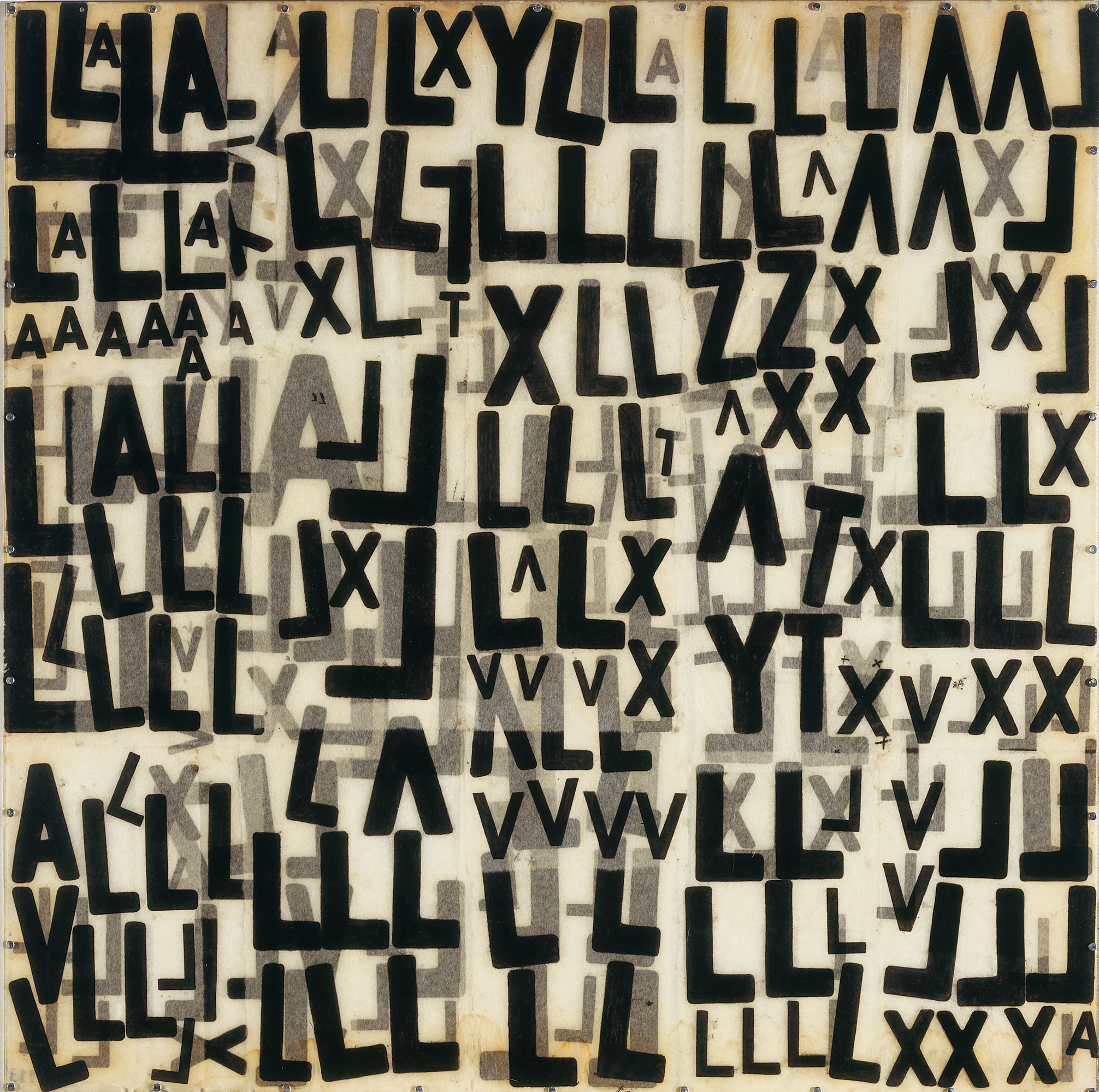
To follow Mira Schendel’s trajectory is to perceive that the body thinks and the mind feels—and that choosing one of the sides of these polarities defining occidental civilization (intellect vs. sensitivity; thought vs. corporeality; essence vs. appearance) will never be a reasonable option for someone who survived the collective irrationality of the early 20th century. If Mira Schendel remained isolated in her silent world, it was only to remain more active and present in life.
Taisa Palhares, 2017 Taisa Palhares is an Art Critic and Professor of Philosophy of Art at the University of Campinas (UNICAMP), Campinas, Brazil.
(Translated by John Norman)

